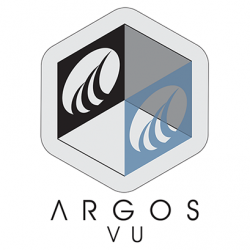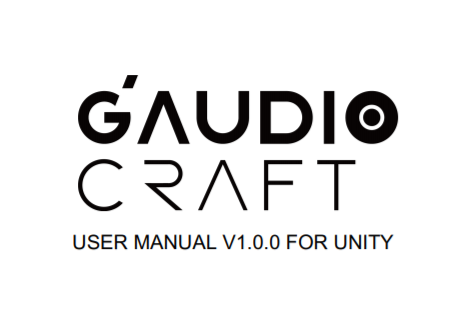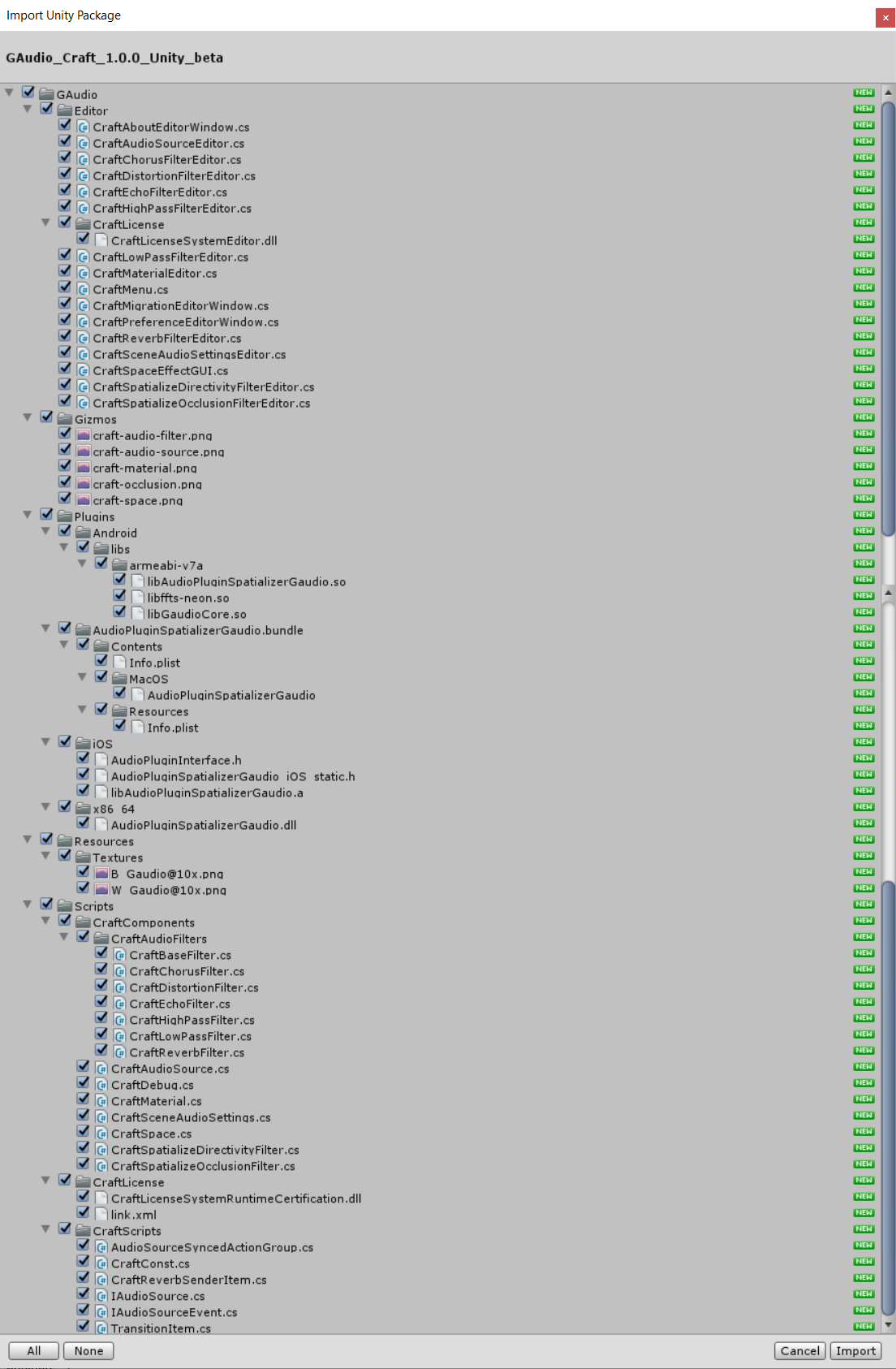GAudio_Works_UserManual_2.0.2_a (1)
GAudio_Craft_UserManual_1.0.0_Unity_beta_a
FMod
3.1. Craft Audio Source
Craft Audio Source allows users to easily spatialize all kinds of audio files, be it mono,
stereo, or any other multichannel audio. One simple click on the Spatialize button
recreates sounds in 3D while reflecting changes in positions (elevation, azimuth,
distance) of sound objects and game players in real-time.
You can also manipulate directivity and occlusion effects manually using this
component.
3.2. Craft Spatialize Occulusion Filter
Sounds are altered depending on what kinds of objects are placed between the
listener and sound sources. This phenomenon is called occlusion, and it is essential
in creating an authentic sound experience. G’Audio Craft gives users the flexibility to
either manually adjust the occlusion level, or automatically detect game objects
around sound sources through Craft Spatialize Occlusion Filter. Once Craft Spatialize
Occlusion Filter is enabled after being attached to Craft Audio Source and the
detection radius is set, game objects located between the listener and sound source
within the radius will affect how sound is heard by the listener.
3.3. Craft Spatialize Directivity Filter
Sounds are altered depending on the direction where sound sources are facing. This
phenomenon is called directivity, and it is essential in creating an authentic sound
experience. G’Audio Craft gives users the flexibility to either manually adjust the
directivity level through Craft Spatialize Directivity Filter.
3.4. Craft Material
Craft Material works closely with Craft Occlusion Detector. With Craft Material, you
can choose a preset for the material of an obstacle inside the occlusion detection
radius defined in Craft Occlusion Detector. It is also possible to customize the 8 occlusion parameter instead of choosing a preset. More presets will be available in future versions of G’Audio Craft.
3.5. Craft Space
Providing a sense of what type of environment a player is in can take VR experiences
to the next level of realism. Craft Space uses RIR (room impulse response) for
reverberation, which means that sound waves gained in various real-life room settings,
such as a warehouse or church, are used. With the help of RIR, G’Audio Craft
maximizes realism and enhances the sound quality of room reverberation effects.
Traditionally, excessive computation power was needed to process RIR, but Craft
Space achieves great sound quality while effectively reducing the computational
workload. Craft Space offers several presets for reverberation, with more to come in
the near future. Another distinguishing property of Craft Space is its use of audio mixers in Unity. You
can build a number of audio mixers with different reverb presets so that you can control
reverb and spatialization on each audio source separately. This allows for more
sophisticated audio engineering and provides more accurate audio simulation. If audio
that is already spatialized gets reverberated, it may interfere with the binaural cues of
the audio and corrupt the producer’s original intention. G’Audio Craft minimizes that
risk by addressing spatialization and reverberation independently.
3.6. Craft Audio Filters
Craft Audio Filters is a component that came about because Unity’s default audio
filters. Since G’Audio Craft uses its own audio source (Craft Audio Source) instead of
Unity’s Audio Source for spatialization, Unity’s default audio filters cannot be used
directly. Craft Audio Filters provides the same audio filters as Unity’s and can be used
for audio spatialized by Craft Audio Source.
3.7. Craft Scene Audio Settings
Craft Scene Audio Settings is where you can modify preferences of your working
parameters like world scale.
3.8. Craft Debug
Log information becomes available when Craft Debug is activated. The log can be
used to monitor the performance of the plugin in case issues arise during
development.
GAudio_Works_UserManual_2.0.2_a (1)
GAudio_Craft_UserManual_1.0.0_Unity_beta_a
HRTF rendering
A Rational HRTF Interpolation Approach For Fast Rendering of Moving Sound
MPEG-H 3D Audio
In January 2013 the requirements were released for MPEG-H 3D Audio which was for an increase in the immersion of audio and to allow for a greater number of loudspeakers for audio localization.[1] The allowed audio types would be audio channels, audio objects, and HOA.[1]
On September 10, 2014, Fraunhofer IIS demonstrated a real time MPEG-H 3D audio encoder.[2]
In February 2015 MPEG announced that MPEG-H 3D Audio would be published as an International Standard.[3]
On March 10, 2015, the Advanced Television Systems Committee announced that MPEG-H 3D Audio was one of the three standards proposed for the audio system of ATSC 3.0.[4]
On April 10, 2015, Fraunhofer, Technicolor, and Qualcomm demonstrated a live broadcast signal chain consisting of all the elements needed to implement MPEG-H based audio in broadcast television. The demonstration featured a simulated remote truck at a sports event, a network control center, a local affiliate station, and a consumer living room. The audio was produced and encoded through an MPEG-H audio monitoring and authoring unit, mpeg-h real-time broadcast encoders, and real-time professional and consumer MPEG-H decoders. The audio was decoded in the consumer living room on a Technicolor set-top box.[5][6]
In April 2015 the Advanced Television Systems Committee announced that systems from Dolby Laboratories and the MPEG-H Audio Alliance (Fraunhofer, Technicolor, and Qualcomm) would be tested in the coming months for use as the audio layer for the ATSC 3.0 signal.[7]
In August 2015 the Advanced Television Systems Committee announced that systems from Dolby Laboratories and the MPEG-H Audio Alliance (Fraunhofer, Technicolor, and Qualcomm) were demonstrated to the ATSC showing how they would work in both professional broadcast facilities and consumer home environments.[8][9]
On April 18, 2016, South Korean broadcast equipment manufacturers Kai Media and DS Broadcast announced the availability of MPEG-H 3D Audio in their latest 4K broadcast encoders.[10]
On May 2, 2016, the Advanced Television Systems Committee has elevated the A/342 audio standard for ATSC 3.0 to the status of a Candidate Standard. The MPEG-H Audio Alliance TV audio system and Dolby AC-4 are part of the A/342 standard.[11]
On June 24, 2016, the South Korean standardization organization “Telecommunications Technology Association” TTA published the standard for “Transmission and Reception of Terrestrial UHD TV Broadcasting Service” for the South Korean terrestrial UHD TV broadcasting service to be launched in February 2017. The TTA standard is based on ATSC 3.0 and specifies MPEG-H 3D Audio as the sole audio codec for the 4K TV system.[12] [13][14]
On January 3, 2017, Fraunhofer IIS announced a trademark program to identify interoperable products that include MPEG-H. [15]
“Just as stereo is played by mp3, VR audio should be played by GAO!” The rest was history. GAO = G’Audio + Ambisonics + Object




